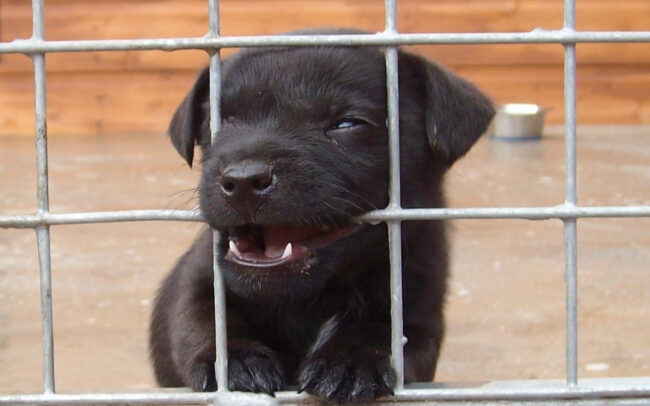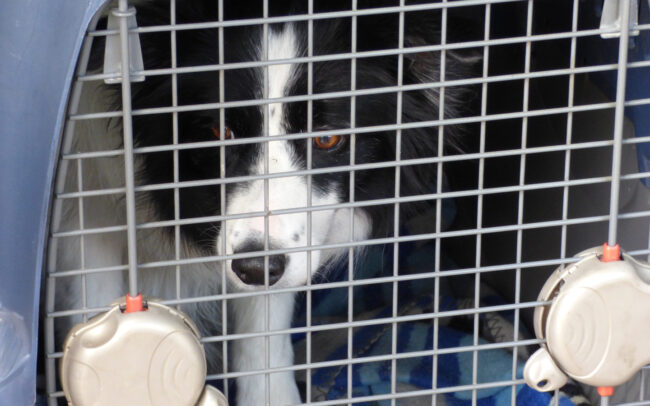Table of Contents
So, you have a new friend in your life that you cannot take your hands and eyes off of? Congratulations on this new furry addition to your family! The excitement is real, and so are the adorable hiccups, sneezes, and licks you are about to experience for a long time.
But are you worried about crate training your little dog? Look no further because all the information you need has been carefully curated here, keeping you and your furry friend in mind.
Puppy tantrums in a crate? Here’s what you can do
So, you’re all set to have this wonderful, little furry friend in your home, your safe space, and want to ensure that the little one feels safe too? Crates are known to provide that feeling of safety to dogs, young and old. However, it can seem challenging to train your little friend to accept the crate as a den on the first go.
Your adorable friend can throw tantrums, and don’t worry; it is only natural! The first step is to get the little one in the crate, and don’t forget to praise your friend when they do so successfully!
When in the crate, you can try to calm the little one down by sitting in the same room for some time, though you must ignore the urge to let the little one out when throwing tantrums.
Resume communication only when you think your little one has understood the situation- you have to be firm, or the training will only get tougher hereon!
Is your Puppy screaming in a crate? What to expect.
Well, be ready to lose a lot of sleep and some of your patience. Again, it is completely okay to feel this way. Crate training can be hard, but only at first. Once your pup has entered the crate, it is half the battle won; you just need to be firm.
Your little friend will create a lot of noise by barking non-stop. Yes, you read it right. But you must remember that the little one is only responding to instincts. Closed and locked spaces can be daunting for anybody and your pup, who expects to cuddle with you 24/7.
The barking can also be coupled with bouts of crying, howling, and scratching the crate. The only solution is not to give in and let your little one accept the crate as their own space within your home.
How to keep a new puppy from crying at night
It is hard not to empathize and suppress the urge to give in to your pup’s cute little face, the one you fell in love with when you first met them.
But there are ways in which you make this process a whole lot easier for yourself and your little pooch. This requires some extra effort from your end, one that will only lead to better outcomes and a happy puppy!
Make the crate fun
Everyone likes their space to look good and have fun by adding their personal touch. Why should your little furry friend be exempted from this? Your priority should be to make sure that you get a crate that is the right size for your pup- it should have ample space for
This tiny trouble-maker to move around in, stand up in, and sleep in. No compromises here! Next, it is time to jazz up the boring, steely/brassy-looking crate and give it a makeover that your little friend will love!
It is time to think of your fluffy pooch as a family- as your baby. Design the crate so that your smallest family member feels welcome, comfortable, and safe. You can leave toys in there, biscuits/ treats of any kind, and add a piece of clothing that you’ve recently worn so that they know you’re always around. A fluffy pillow/ mattress for your furry friend will be perfect!
Exercise before crate time
Your little pooch needs to remain active and exercise throughout the day. Movement and physical stimulation are necessary to remain healthy and grow well like any living being.
Your little pooch might happily run around, wagging its adorable tail during playtime. This is the energy you need your pup to exert before it is time to enter the crate! This ensures that your little one gets some rest and a good night’s sleep even.
All the physical activity is bound to make your pup tired in a way that they’d want to sit quietly and catch their breath while in the crate. And the crate has already been made comfortable by now, so time to tuck the little pooch in and play some soothing background music.
Avoid crate training mistakes
- Avoid introducing your furry friend to the crate in an unhappy tone. Talk them into what will happen- use gestures, pet them, smile, and make sure you pat the mattress in the crate that your pup will sleep on.
- Avoid sweet-talking your pup when they cry for attention
- Avoid leaving for work/ leaving the room in a sad tone when your pup’s in the crate. Talk normally and tell them you’ll be back soon.
- Avoid giving meals outside of the crate for the first couple of weeks.
- Avoid a short crate training period as this might mean that the training remains incomplete!
Can a puppy cry itself to sleep?
Yes! It is heartbreaking, but this is a fairly normal occurrence. All that activity throughout the day, the running around and probable bouts of continuous barking while in the crate, might lead to a tired little pooch. It is, however, important to know why your little pup’s crying.
Some reasons may include the need to go potty or pee or separation anxiety because they need to be around you. Mind you, your pup might also be crying for attention, which is what you need to watch out for.
It is a good idea to sit by the crate for 5-10 minutes when your pup cries continuously at night, just to reassure them that you are always around. Make sure to leave a filled bowl of water for your pup as the little one might be too exhausted and go to sleep extremely thirsty from all the crying.
Crate training on the first night- a complete guide
The first night for any kind of new development or training is always the hardest. You just need to remember that you are crating your pup so they are trained well and can acclimate to what will soon become their safe space.
You need to ensure you don’t give in to all the barking and whining. Communication is your friend. It will help tell your adorable little pooch that you are watching over them even though they’re in a crate.
Don’t go all out and crate them in another room on the first night. Keeping the crate in the same room you sleep in for the first few days is always a good idea. This will make your pup feel a lot more comfortable, reassure them, and they will be able to see you in the same physical space.
This is bound to make the first night smoother. It also gives you and your pup a chance to wake up to each other in the same room the next morning, and what a glorious and warm start that would be to your (and your pup’s) day!
To sum up
All said and done; the golden rule is to remember that you are crating your puppy for your pup’s and your own good. You must not cave and always remind yourself that this little p(awe)some pooch will be your best friend and family.
This is a good way to keep yourself on track and ensure that you complete the crate training process that will only help your pup, not just now but also in the future, when you take those road trips and travel the world together!


